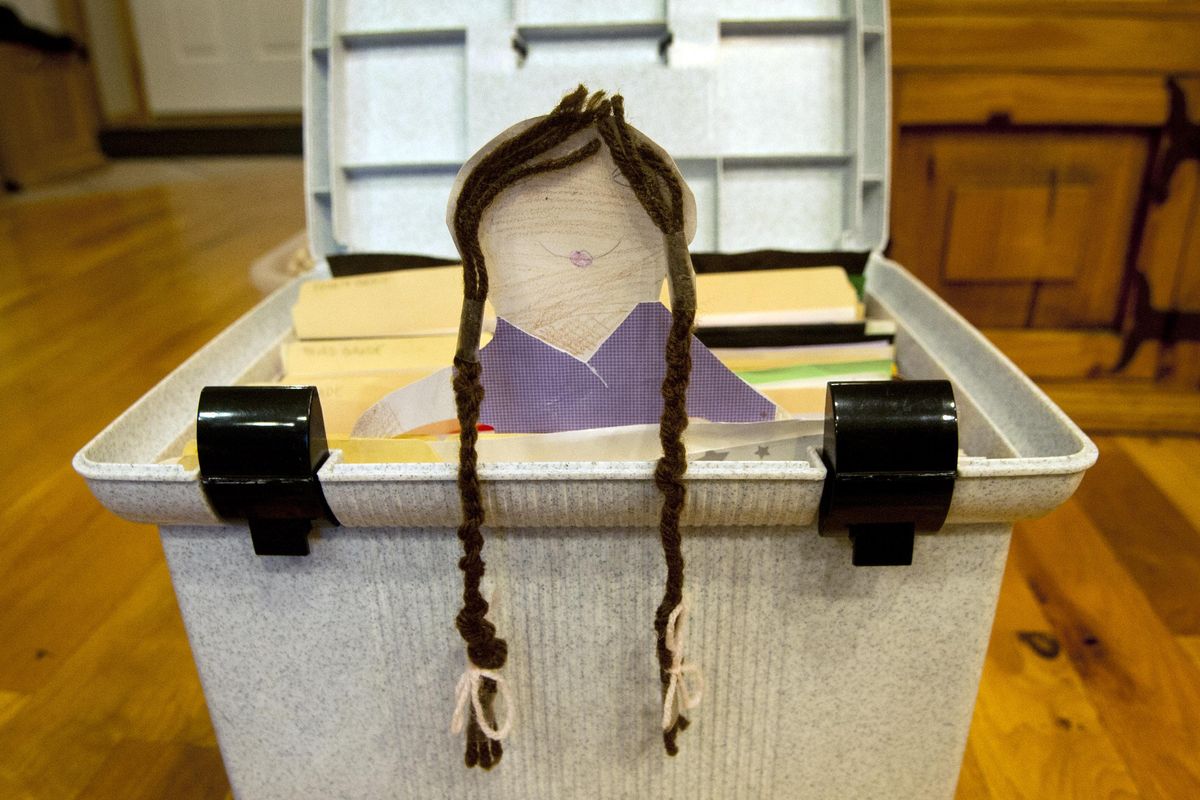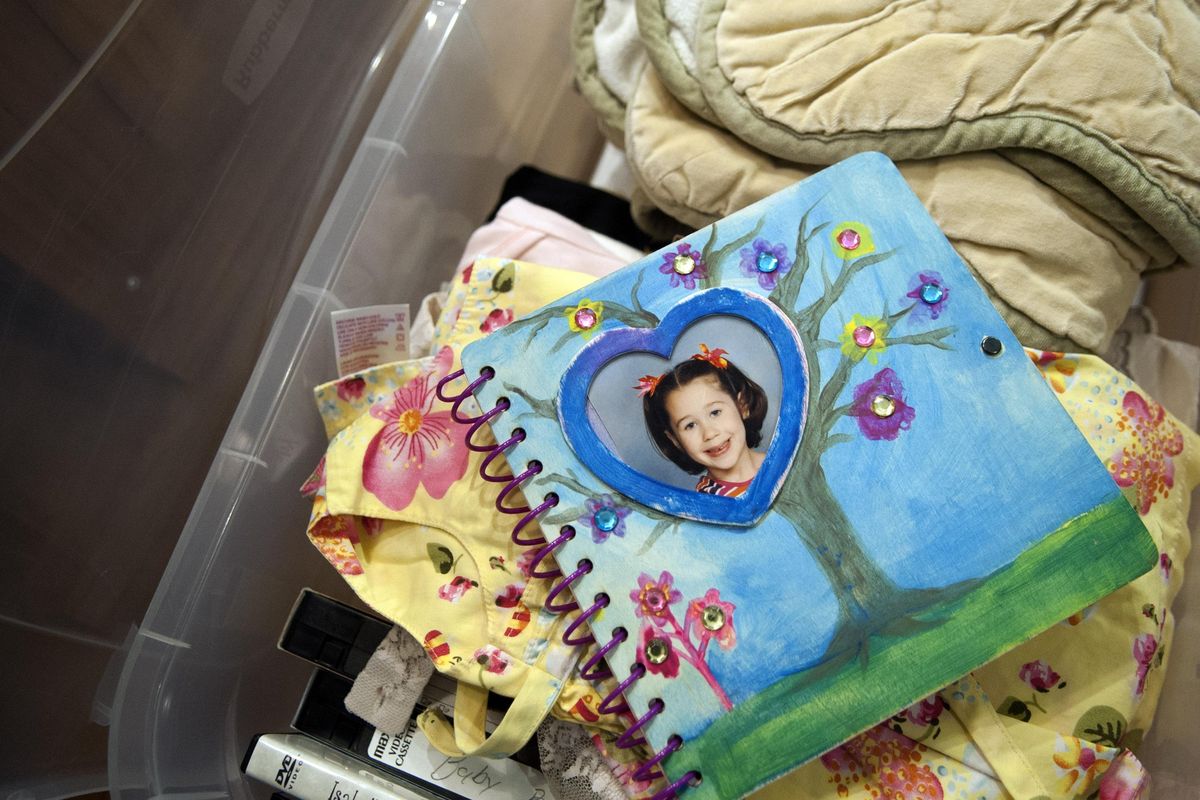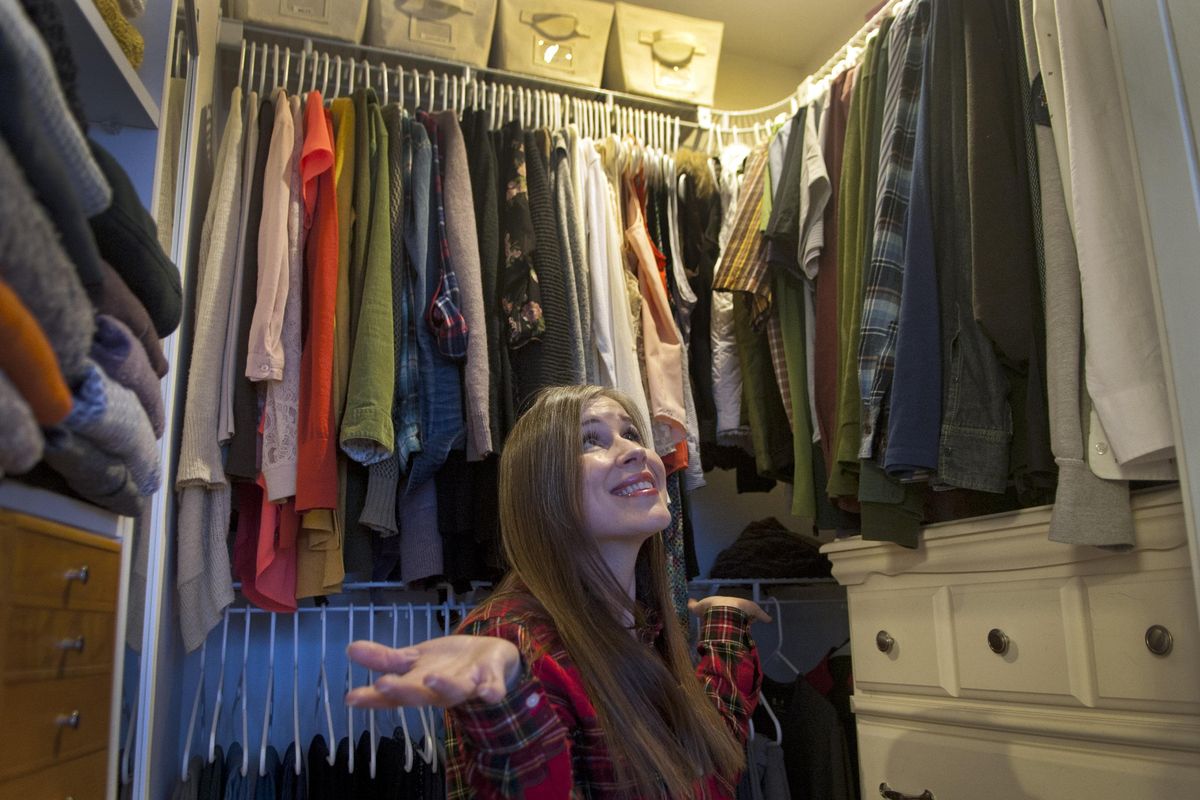Minding clutter: Inspired by Marie Kondo, Spokane woman helps others get their houses in order

During childhood, Wendi Eva loved organizing her closet and books just so. As a busy Spokane Valley mom, she struggled to keep household order until she found inspiration in Marie Kondo, a renowned tidying expert and author.
In fact, Eva jumped in full-force a year ago to create a Facebook page BreathingRooms, mixing her own ideas with Kondo’s. More than 400 followers trade ideas. On Jan. 1, the group began weekly challenges to clear clutter and organize with Kondo’s “KonMari” method.
Kondo created a sensation with her No. 1 New York Times best-selling book, “The Life-Changing Magic of Tidying Up.” Now, people can watch her help people tackle the clutter in their homes with eight episodes of “Tidy Up,” which came to Netflix on Jan. 1.
Kondo urges people to only keep things that “spark joy.” Eva, 42, is a fan. She describes a year-long journey learning what to keep and how to order her things by categories, versus clever organizing ideas..
“I’ve always defined clutter as deferred decisions,” Eva said. “The truth is you can read all the organizing articles you want or buy all the clever organizers at the container store, but you’re always going to return to the same problem if you don’t reach decisions about your things,” Eva said.
Keepsakes from Wendi Eva's daughter Bella is photographed at her Spokane Valley home on Wednesday, Jan. 9, 2019. She created a Facebook page called BreathingRooms for organizing and removing clutter. (Kathy Plonka / The Spokesman-Review)Buy a print of this photo
“I really believe the key to decluttering is changing your mindset and learning to think differently about stuff. It involves material things but it also involves your level of commitment and amount of digital clutter you have. You learn to make intentional decisions.”
Here are seven tidying “mindset” tips:
1. Give experiential gifts
Many members of BreathingRooms are parents, and they gave the most kudos to the idea of giving children and family members the gifts of experiences and time, rather than material things.
Eva brought this notion up in BreathingRooms near the holidays, but it applies year-round, she said. “It’s going to matter even more to them and it’s not going to end up in a dark corner of a closet.”
Examples include a museum membership or fun classes to develop new skills. It could even be a family “staycation,” which Eva, her husband and their two kids, ages 12 and 10, do every December.
“We stay in a local hotel for two nights, different ones every year, and it’s devoted family time to swim in the pool, get free breakfasts and we do local touristy things. We’ve created great family memories that way and I don’t have to store anything, clean anything or maintain anything, so I love that.”
2. Categorize paper
From mail to children’s art projects, paper is one of the biggest contributors to clutter, Eva said.
“I tell people to deal with paper the instant it enters your home,” she said.
With mail, she creates separate paper piles by categories: trash, bills to pay, things to read and items requiring follow-up. Then she tries to act on each pile immediately. “If you can’t immediately act on all the piles, at least throw out the garbage.”
Some parents turn children’s artwork into gift wrap. Eva has other tips, one being the online company ArtKive. Parents can send a collection of children’s art work and mementos to the business, which compiles them into a memory book. “That’s a great service, but a little pricey,” she said.
She keeps memory boxes for each child labeled per year of life. In them, Eva saves the most meaningful letters, poetry or short stories, report cards and memories. “They have to say something, not just just birthday cards with a signature.”
For 3-D items, she separately keeps one clear storage bin that goes under a child’s bed that typically hold one baby outfit, a keepsake such as a diary, and other sentimental artifacts. Eva will go back periodically and assess what items to keep in those containers.
3. See gifts differently
Guilt often stops people from getting rid of gifts that aren’t wanted, Eva said. Another way to think about them is the intent that gifts are meant to bless others.
“Gifts are intended to bless somebody, and if they don’t bless you, then you can return them or pass them on. You don’t need to keep them. The blessing of a gift is really in the fact that the person thought enough of you to give you something.”
To donate gifts, people can consider their favorite charity or thrift shop, she said.
4. Reduce clothing
“I think pretty much everyone has too much clothing,” Eva said. She heard a statistic that people wear about 20 percent of their wardrobe 80 percent of the time. “It’s true that people wear their favorites over and over.”
Donate what you don’t wear or items that aren’t in a “feeling fabulous” category.
Eva also believes a key is to store clothes so you easily can see items in closets and drawers, preferably using Kondo’s folding tips and vertically filing. Some people follow a “capsule wardrobe,” where you select a limited number of high-quality clothing items that are interchangeable.
“I haven’t done it yet, but I’m considering it,” she said. “People say it makes decisions in the morning so much easier and keeps you on top of your laundry.”
Eva uses a five-box method for closets or any household space by category:
Throw-away box for trash;
Stow-away box for what really belongs elsewhere;
Lay-away box for items such as photos that are too time-consuming in the moment;
Put-away box for materials you’re keeping to put back into the space you’re conquering;
Give-away box for returning borrowed items, selling, donating or re-gifting to others.
5. Redefine waste
Concerns about being wasteful is another reason people don’t get rid of things, Eva said. But items left in storage and never used can also be defined as wasteful.
“It’s also wasteful to sacrifice your time, energy and space,” she said. “I’d say for people who are sensitive to waste, maybe you’d prefer donating it to someone you know can really use it.”
That might be supporting refugees furnishing a home. Eva was able to donate her wedding dress to a local organization that provides bridal attire for people who couldn’t afford it.
Kondo suggests tackling sentimental items last when considering household organization, Eva added.
When donating or gifting, she sometimes goes to a Buy Nothing neighborhood group on Facebook. The Buy Nothing Project isn’t a forum to sell or buy items, or even trade, but rather for sharing or gifting. “It’s similar to the Freecycle Network, but it’s hyper-local.”
Eva will get rid of a rarely used piece under a 20-20 rule. “If you can get it again for $20, or spend less than 20 minutes worth of your time to get it.”
6. Guard purchases
“You have to start to be diligent about monitoring purchases at point of purchase,” Eva said.
Filter with questions, such as:
How long will the item last?
Does it bring joy or is it essential?
Is it limited to season or function?
“Be like a bouncer making sure something doesn’t come into your home unless it’s a favorite or has lots of uses.”
7. Purge by habit
Many in the BreathingRooms space have adopted a frequent habit to purge, rather than clearing clutter once a year, to combat the constant inflow of items entering the home.
“It’s kind of like weight loss,” Eva said. “You can go on diet but you have to maintain it. It’s the same with clutter.”
If you’re empty-nesters dealing with left-behind possessions of older children, ask them to reclaim possessions in batches if they have their own place.
Unload mental clutter, too. “This last year, I cut back on commitments and number of activities,” Eva said. “I can only invest in so many.”




